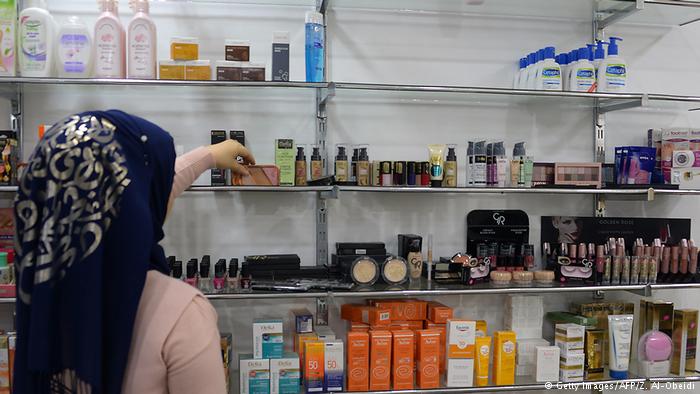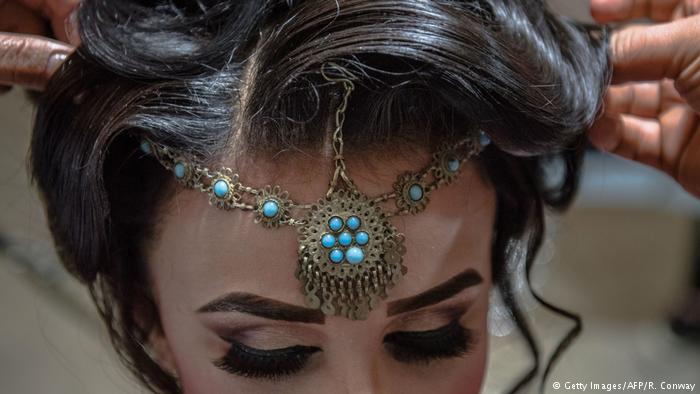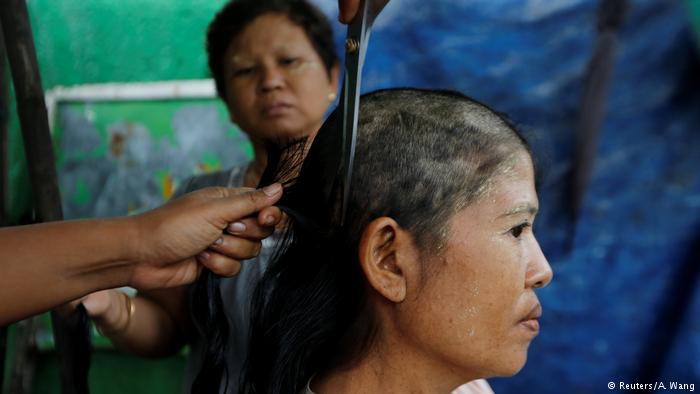Beauty and reality – How 25 years of Photoshop changed our perception of reality
This month marks 25 years since the launch of Photoshop. The image editing software has revolutionized the art of photo processing and our perception of reality – from ideals of beauty to media manipulation.
It started as a simple computer program, only able to display a black and white image on a computer screen. Now a quarter century later, Adobe Photoshop is one of the most powerful image editing tools in the world. And the software seems to be everywhere: on our computers and smartphones, social media, in fashion magazines, newspapers and even our subconscious.
Apparently we are so used to photos being modified, altered, filtered and edited, that “un-photoshopped” photos of celebrities shock us and go viral. That’s what the recent leak of un-retouched photos of Beyoncé and Cindy Crawford proved.
Seeing these stars as they really are, be it with cellulite or skin blemishes, has triggered a discussion on social media in recent weeks.
<blockquote lang=”de”><p>American Horror Story: Beyoncé without photoshop <a href=”http://t.co/ZLNwpTDwD9″>pic.twitter.com/ZLNwpTDwD9</a></p>— Call me V (@victororvikk) <a href=”https://twitter.com/victororvikk/status/570636131521441792″>25. Februar 2015</a></blockquote> <script async src=”//platform.twitter.com/widgets.js” charset=”utf-8″></script>
Have you seen @CindyCrawford untouched photo! Gorgeous! Inspiring to all women who think they need to be perfect pic.twitter.com/XLU5iRAdaD
— Mandi❄️ (@autumncj210) 15. Februar 2015
Whether the reactions were positive or negative, the recent photo leaks reignited the debate on the ethics of photo editing – something that has become the norm 25 years after the launch of Photoshop.
‘Photoshop creates an unattainable image of beauty’
The ways in which a person’s appearance can be changed through Photoshop are endless, from lengthening neck and legs to cutting out ribcages, raising cheekbones, filling in hair and changing skin color.
A video created for the non-profit website Global Democracy shows some of the ways the fashion industry often manipulates images.
“The entire fashion industry is ethically highly problematic,” renowned German media scholar Thomas Knieper told DW. “By stretching the legs of stars, shrinking their waists and removing their wrinkles and skin blemishes, people admire them even more and try to emulate them.”
Studies show that people who are often exposed to such heavily edited fashion pictures believe that what they see is the norm, which makes it more likely for them to suffer from eating disorders like bulimia and anorexia, according to the media scholar.
“It drives people into depression because they can’t meet the requirements of the beauty ideals that are set by the media, not even if they undergo extreme starvation and beauty surgeries, because what is presented to them is anatomically impossible,” Knieper said.
‘My eating disorder was perpetuated by retouched magazine photos’
That’s something Canadian Erin Treloar learned the hard way. She struggled with a major eating disorder as a teenager.
“At age 17, I was 5 feet 11 inches (180 centimeters) tall and weighed 89 pounds (40 kilos),” she told DW in an interview. “My internal organs started shutting down, I lost my hair and I had to be admitted to a hospital program.”
Treloar says her eating disorder was largely perpetuated by the media’s definition of beauty: “Having a perfectionist nature and seeing what the media defined as perfect and beautiful, I wanted to achieve that.”
Campaigns against retouching
In order to advocate for change and prevent other girls from going through similar experiences, Treloar, who is now 30 and healthy, launched the petition #LessIsMore. The mother-to-be hopes the signatures she collects will help pressure magazines and mainstream media to reduce the amount of Photoshop they use.
Help @RAWBeautyTalks convince mags to use less Photoshop! #LessIsMore http://t.co/4StqE8C7D1 #nomakeup #nophotoshop pic.twitter.com/WiSMiZ80O5
— Sharleen Joynt (@sharleenjoynt) 20. Februar 2015
“I know that photo retouching is not going to go away completely and I don’t think it needs to,” Treloar said. “But what I want to see is that magazines stop retouching the body and faces of the women and men they feature. Fine, if there is a stray hair on the clothing that they’re shooting, remove that, or if somebody has a massive zit in the middle of their forehead, deal with that. But stop whittling down waists and adding thigh gaps.”
More and more companies are picking up on what people like Treloar are advocating. American Eagle Outfitters’ lingerie line “Aerie” recently released the #AerieReal campaign, which only features completely un-retouched models.
“Our Aerie Real message embraces a more realistic image of girls and women. There is no altering in any way, nothing is covered up,” Aerie’s chief merchandising officer, Jennifer Foyle, told DW via email. And the campaign seems to work.
I LOVE THIS SO MUCH #aeriereal pic.twitter.com/yocRojkU0l
— Queen of Recovery (@RecoverED101) 2. Januar 2015
‘There are no clear regulations’
It’s not just the fashion industry that might need to rethink how much Photoshop they’re using to manipulate their pictures. Every fifth entry in this year’s World Press Photo competition, a prestigious photojournalism contest, was eliminated because it was heavily edited using digital tools like Photoshop.
“But what does that mean exactly, digitally edited too much? Is changing the colors already too much editing?” Knieper asked, adding that clear regulations of how much Photoshop can be used are badly needed.
The same goes for newsrooms and media organizations all over the world. There are no overall criteria for how much news photos can be edited. “Every editorial office has a different definition of what is acceptable when it comes to Photoshop,” Knieper said.
Generally, technical edits like adjusting colors, sharpening, and removing fluff are tolerated by most media organizations, according to Knieper. But what’s usually considered a no-go is changing the meaning of a picture by creating a montage, removing objects and people as well as adding in new information.
Author: Anne-Sphie Brändlin
Editor: Marjory Linardy
WTO RECOMMENDS
I am not a fan of beauty pageants. The shallowness of the whole concept where perfect looking women strut the stage in bikinis and pretty dresses is absurd- the fact that one of them takes the label of Miss World or Miss Universe is even more so.
The globalization of ideal beauty
Female beauty is often defined by the Western fashion elite in Milan or New York. But more and more German magazines are speaking out against it. Internationally, there are a multitude of different agendas.
Kim Kardashian: back in Business
Kim Kardashian has posted a picture of her naked backside on Instagram with the aim of “breaking the internet.” The picture created a huge debate in social media. However, I think this kind of a campaign is actually helping businesses to sell their products.
“Something in the way she moves” – Unveiling the Secret of a Confident Woman
Have you ever seen a woman who attracts everybody’s attention when she is walking on the street? She does not wear a sexy dress. She is not remarkably pretty, and she does not look perfect or walk like a model either. But she has something in the way she moves. The Beatles even dedicated a song to this “something” that a woman has. Well, guess what, every woman can have it. Here are my suggestions.







